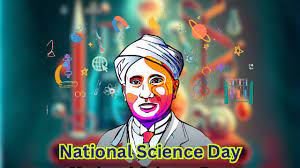
National Science Day: Know About the Raman Effect...

The purpose of National Science Day is to commemorate the 1928 discovery of the "Raman Effect," a phenomenon of photon scattering by indian physicist CV Raman.
India observes National Science Day on february 28 each year to commemorate indian scientist Chandrasekhara Venkata Raman's 1928 discovery of the photon scattering phenomenon. The finding was subsequently dubbed the "Raman Effect" in honor of him. Mr. Raman was awarded the 1930 Nobel prize in Physics for this incredible finding. On this day, schools, colleges, universities, and other academic, scientific, technological, medical, and research institutes arrange quiz contests, seminars, and other events.
Raman Effect: What Is It?
The Raman Effect, as described on the Ministry of culture website, is a phenomenon in spectroscopy that is characterized by excited molecules at higher energy levels scattering photons. Put simply, it's the shift in light's wavelength that happens when molecules deflect a light beam.
A tiny amount of light leaves an opaque, dust-free sample of a chemical compound in directions that differ from those of the incident (incoming) beam. The wavelength of most of this scattered light is the same. There is, however, a very small fraction with wavelengths different from the incoming light due to the Raman Effect.




 click and follow Indiaherald WhatsApp channel
click and follow Indiaherald WhatsApp channel